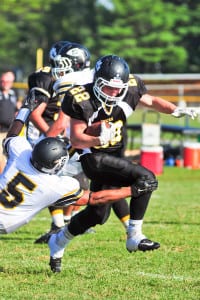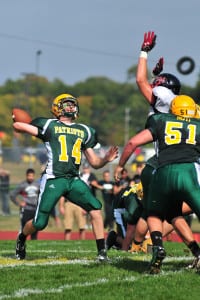By Daniel Dunaief
Imagine a typical school classroom filled with adults, listening as intently as they can to a detailed lecture about the finer points of tax law or multivariable calculus.
The adults in the room who weren’t particularly interested in the topic might struggle to concentrate, and several of them might try — perhaps unsuccessfully — to stay awake.
Now, bring a group of 8-year-olds into the same room, with the same instructor, and the same material. The likelihood that any of those younger students would fall asleep in their chair is far lower.
One reason for that difference is that the younger set, consistently, gets more sleep, while the older generation, from high school students on up the chain, typically, are not as well-rested.
“We think it’s normal, if you’re bored, to fall asleep, but it’s not,” said Dr. Steven Feinsilver, director of the Center for Sleep Medicine at Northwell Lenox Hill Hospital. “Falling asleep in a lecture that doesn’t interest you means that you either have a sleep [problem] or, more likely, are sleep deprived.”
Indeed, the percentage of the population that is sleep deprived is estimated at around 50% or more, a staggering number, which means that at least half the population needs more restorative sleep.
With the start of another academic year just under a month away, sleep experts are urging students to start shifting back to their respective school sleep schedule in the coming weeks.
These sleep experts suggest that students who may sleep until 9 a.m. or later during the summer, but will soon get up for school at, say, 6 a.m., are experiencing a type of jet lag people often feel when they travel across the Atlantic.
Sleep experts say that changing an adolescent’s schedule to an earlier waking routine, a week or more before school starts, can ease that school-year transition, while others recommend shifting up wake-up time, by an hour earlier per day during the September lead-up.
“If you know you’re going to have to be waking up at 6 a.m. for the first day of high school, you should be starting to wake up within that hour, within three days or so, before that so your body gets used to it,” said Lauren Hale, professor of preventive medicine and sleep behavior expert at Stony Brook Medicine.
Routines, including getting enough sleep, are important in preparing for the mental effort required to meet daily learning challenges.
“Our brains like a consistent schedule,” said Brendan Duffy, director of Sleep Services at Catholic Health, which includes Port Jefferson-based St. Charles Hospital and Smithtown-based St. Catherine of Siena. “It’s important to get up at the same time,” even on weekends.
Teenagers need more sleep
The academic age group that needs the most sleep is the one that is often getting the least.
High schools often start just after 7 a.m., in part because after-school activities such as athletic practices and events, as well as other extra-curricular activities, take up the hours between the end of school and the onset of darkness.
“Between 15 and 25, everybody’s clock tends to run slow,” Feinsilver said.
The school districts that have pushed high school start times back have seen their test scores go up, added Feinsilver.
He acknowledged that it’s challenging for parents who are managing their own work schedules to balance their children’s academic hours. Parents and schools can and should try to compromise, he urged.
Benefits on the athletic field

A return to school also means the restarting of athletic programs, some of which begin before the first day of the new academic calendar.
Student-athletes are pushing their minds and bodies, as they juggle demanding academic requirements with training and competition.
Sleeping the estimated optimum of seven to nine hours per night not only helps improve an athlete’s competitive skills but also helps prevent physical problems.
Sleeping enough is a “way to avoid injuries,” said Duffy, who has been talking to students in a range of ages all the way through college.
Duffy added that professional teams are also encouraging athletes to budget for the sleep their minds and bodies need.
Additionally, he suggests sleep is a form of prehab, as sufficient rest can prevent injuries that would require rehabilitation.
Duffy has spoken with several area teams about the importance of sleep, including the Stony Brook women’s soccer team.
“For 90% of the players, this is the first time” they hear about the importance of sleep athletically, said Tobias Bischof, the head coach of SBU women’s soccer team. “My players are 18-to-22 years old and it’s not on their radar yet how important sleep is.”
He describes sleep as “probably the greatest recovery tool we have” and believes it’s “super important for injury prevention.”
As a coach, Bischof has started journaling his sleep patterns and believes he and others can be better coaches with enough rest.
He suggested that coaches are under tremendous pressure and sleep helps him become more patient.
Numerous factors contribute to success on and off the field with these student athletes, including nutrition, hydration, self-care and relationships with their families, as well as sleep, Bischof added.
The soccer coach doesn’t ask about sleep when he’s speaking with high school players who might join the SBU team, but it comes up when athletes ask about ways the school works with athletes beyond training.
He describes mental health support as well as sleep education.
“You always want to make them a better version of themselves,” Bischof said.
Jim Taylor, who specializes in the psychology of sports and parenting and who has been a consultant to the U.S. and Japanese ski teams, met Duffy when they were on a podcast panel related to sport psychology in 2022. Taylor suggested that sleep is much more than a physical process, as it has psychological and emotional implications.
“One of the most powerful tools that athletes have is sleep, which impacts them in so many ways,” he explained in an email.
Taylor, who competes in triathlons, has seen his results improve from top 20 in his age group to two national championship titles and three world championship podiums.
“Of course, I’m sure other factors contributed to my improved results, but I know that improved sleep was a key contributor,” he explained.
Mental health
Sleep can also be a sign of, or a contributing factor to, mental health issues.
In a Sleep-to-Rise campaign, the Sun Belt Conference suggests that talking about sleep is a gateway to discussing mental health.
Not getting enough sleep or poor sleep quality can increase the risk for mental health issues, while poor sleep itself can reflect mental health challenges.
In its sleep-to-rise online effort, the conference urges athletes to consider sleep a “competitive advantage.”
“With student-athletes, we emphasized the importance of prioritizing your sleep,” Lauren Shear, assistant commissioner of Championships & Sports Administration at the Sun Belt Conference, explained in an email. “This meant highlighting how sleep affects both mental health and physical health.”
Shear added that the conference tries to provide educational resources on mental health, nutrition, sleep and other factors to equip the student-athletes with the information they need to succeed in and outside competition.
She tries to get seven to eight hours of sleep per night and has noticed that when she gets six or less, she’s more irritable and lethargic. She’s also more likely to get sick.
Stony Brook’s Hale added that sleep, unlike diet or other life changes, can provide a noticeable benefit.
“People can see immediate results quicker than other behaviors,” Hale said. “If you choose not to have dessert, you might feel like you lost something and you don’t see a benefit the next day. If you actually got a full night of sleep, you might feel the benefits that day.”
Sleep tips from SBU’s Hale
• Prioritize your sleep health
• Try to have regular sleep times, even on
weekends
• Make sure you get morning light
• Avoid substance use, like caffeine late in
the afternoon
• Put screens away before bedtime
• Sleep in a cool, dark, quiet place
• Pay attention to your body. Figure out when you get restorative rest compared with when you don’t.













